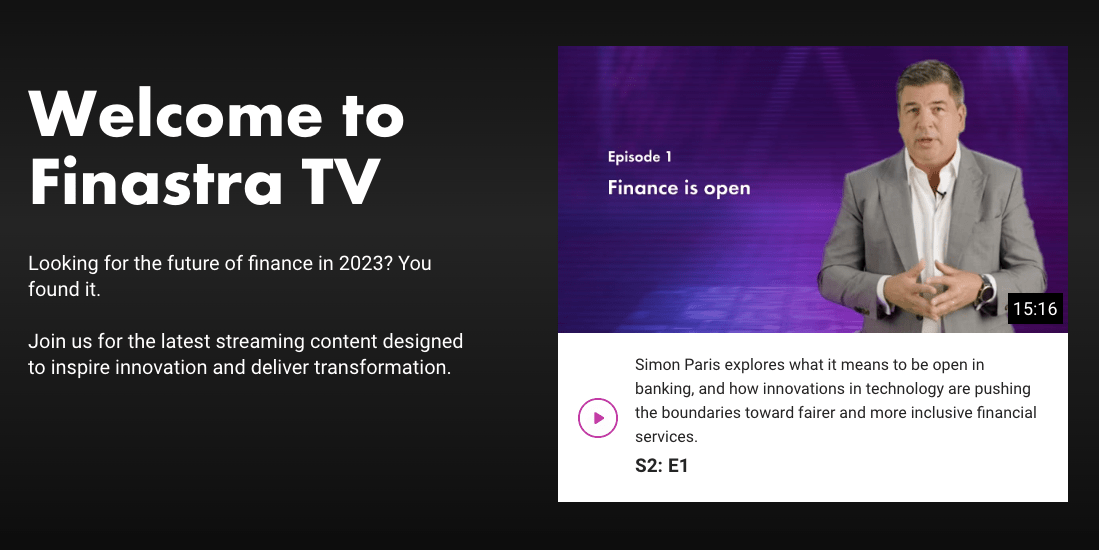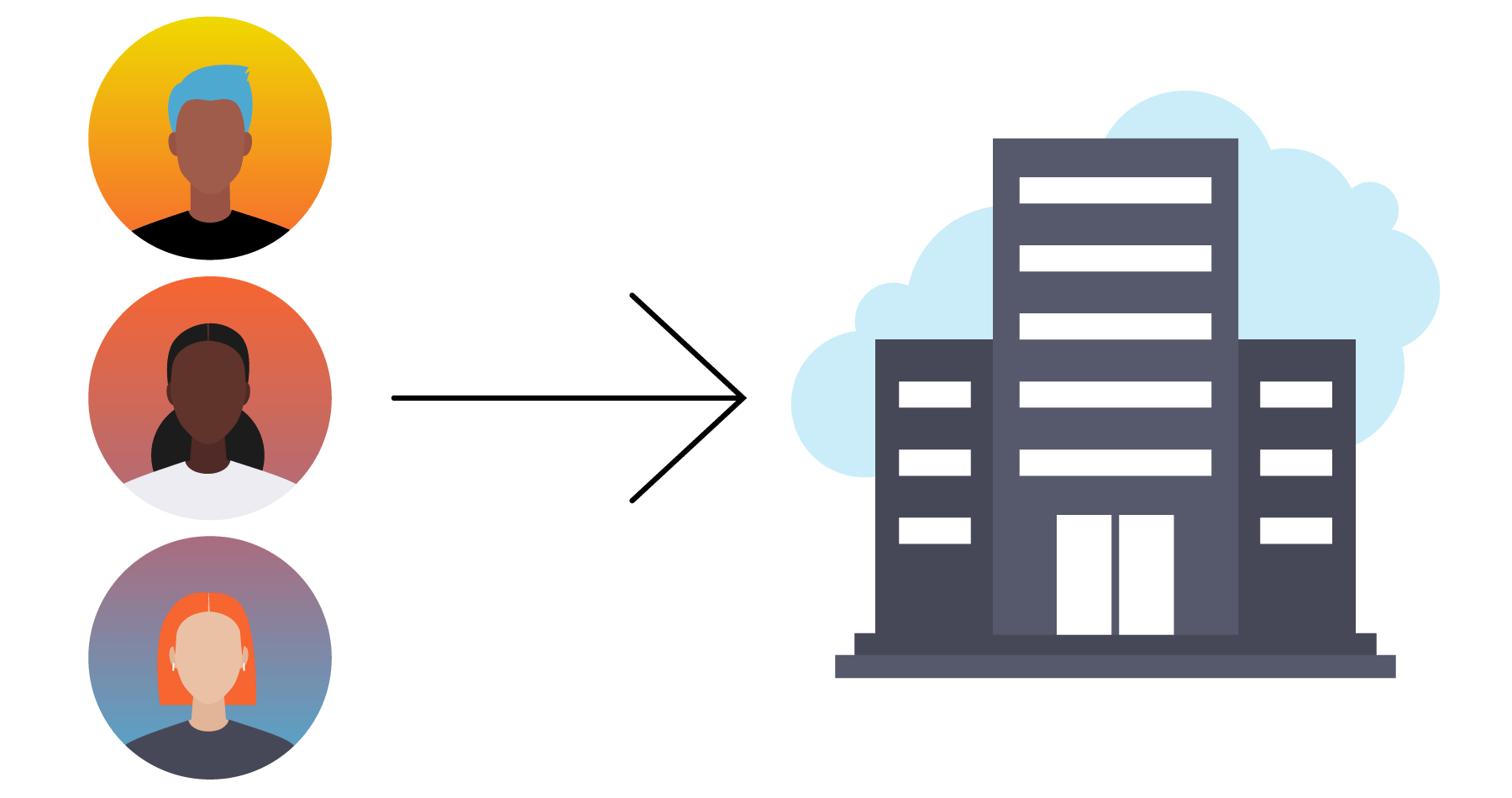The last few years have tested the agility and adaptation of every marketing team. Physical events went digital. Digital events had to get interesting. Video marketing became more important than ever, and teams had to think about how the sales process worked in both remote and hybrid environments.
B2B video marketing is moving beyond awareness and driving engagements and conversions at each touchpoint in the marketing funnel. In fact, when we interviewed marketing leaders, the topic of discussion wasn’t whether video marketing could drive conversions. It was about the strategy and tech stack needed to do it.
Learn more in our PLAY episode, “What’s New, What’s Not and What Matters Most to CMOs Today.”
RETHINKING THE HYBRID EXPERIENCE
Traditional digital media and video marketing tactics like webinars aren’t keeping people’s attention or driving conversions.
That’s what Margaret Franco, CMO of Finastra, realized as she helped her team adapt to a digital-first environment during COVID-19 lockdowns. Part of the reason is that video marketing, for many teams, is still focused on driving top-of-funnel activities like awareness without building the relationship afterwards. Without in-person meetings and industry events, the Finastra team knew that the customer journey across video marketing had to be personal. From brand awareness to conversion and retention, video had to break through a noisy digital environment where everyone was remote and often distracted.
For Finastra, the video content strategy started by rethinking the video marketing tech stack. As Finastra’s VP of Marketing, Joerg Kleuckmann, puts it, “It all kicked off from an experience I had when COVID started. I was clicking on an ad from a competitor because they had a digital event, and I thought it was our event, and I got confused.” Not only that, when people did access video content from Finastra, they got distracted by something else on YouTube.
Many marketing leaders dealt with similar challenges. Latané Conant, CMO of 6Sense, says that every marketer has to be an “octopus.” They have to cover different disciplines and teams in order to understand what type of video is best for the company and the customer.
Paige O’Neill, Chief Marketing Officer at Sitecore, believes that content is still the biggest challenge, whether a hybrid or digital or in-person format: “How do we connect the dots between the two and serve up that experience for customers?”
In a hybrid environment where people engage online and offline, marketing teams must provide an ongoing journey customized to what personas need the most. B2B video marketing must be more like events, and events must be more like digital multimedia. Both tactics require a lifecycle strategy that builds a relationship with attendees before, during, and after the experience.
To reinvent the team’s B2B video marketing strategy, Finastra launched Finastra TV in 2022 to broadcast video content related to the banking industry. The channel allows viewers to find the content most relevant to their industry and engage with it at their own pace. “We’re going to build the Netflix for the financial services industry,” Franco says. “Finastra TV is always promoting. It’s always engaging.”
“We’re going to build the Netflix for the financial services industry,” Franco says. “Finastra TV is always promoting. It’s always engaging.”
Most importantly, first-party data became the foundation for the new video marketing strategy from the start.
Learn more in our PLAY episode, “Finastra TV: Building Your Own Company Channel.”
VIDEO MARKETING WITH FIRST-PARTY DATA
Streaming platforms like Vimeo or YouTube can host video content, but they offer limited analytics tools. The same goes for social channels, where marketers can measure views and understand viewer demographics but not how qualified they really are as prospects. This is why measuring the success of video marketing often only goes as deep as top-of-funnel metrics like views, social shares, and time watched.
To create a B2B video marketing strategy with the personalization power of Netflix, marketers must focus on collecting first-party data from viewers. By understanding individual prospect behavior across all video content, marketers can better understand people’s interests and viewing habits and follow up at an individual level.
The first step for this kind of video marketing is simple: create video content that your prospects want to view. As Conant explains, teams should organize video production in the same way that “media companies deal with content.” By starting with the market fit for the product—and the content that establishes that market fit—teams can plan content for each persona.
At Finastra, the team created a content strategy based on different seasons and topics that consist of 10 to 15 episodes per topic. The goal was to build a digital stage that drove opportunities, not just views. Every viewer who accesses Finastra TV fills out a form once with relevant contact information and then has the freedom to watch all the episodes. This first-party data is automatically routed to Finastra’s CRM, which in turn scores the lead based on viewing activity. “We developed a custom solution on the channel where we dropped a cookie behind the user’s first Marketo registration form,” Klueckmann explains. “Gating is a thing of the past. Forms are a thing of the past.”
“We developed a custom solution on the channel where we dropped a cookie behind the user’s first Marketo registration form,” Klueckmann explains. “Gating is a thing of the past. Forms are a thing of the past.”
Finastra TV, which is built with Brightcove, now offers the sales teams an opportunity to follow up based specifically on which videos the lead viewed with a CRM integration that analyzes who is most engaged based—and what conversations may be most relevant to them. Event content is repurposed to make it video-first and, since then, Finastra TV is fully integrated with the customer journey.
A TRANSPARENT JOURNEY
COVID-19 taught teams valuable new digital tactics to persevere through an unprecedented challenge. The next step is to integrate those tactics with real-world events and interactions. This all starts with understanding the tech stack that you need to see each customer touchpoint as it happens, whether online or offline.
“We’re in a hybrid journey right now,” says Paige O’Neill from Sitecore. “How do we bring the best of digital but go back to those customer interactions?”
By offering Finastra TV, the team saw a 26x increase in ROI from physical events, capturing the potential of a hybrid customer journey in new ways. This wouldn’t be possible without the first-party data integrations that help Finastra understand exactly who is watching what and passing that information to the sales team.
As B2B video marketing follows the success of streaming platforms, the importance of customer data is only going to grow. By building a data-first multimedia strategy, you can ensure that video content is fully integrated from the first touch of the customer journey to the last.




